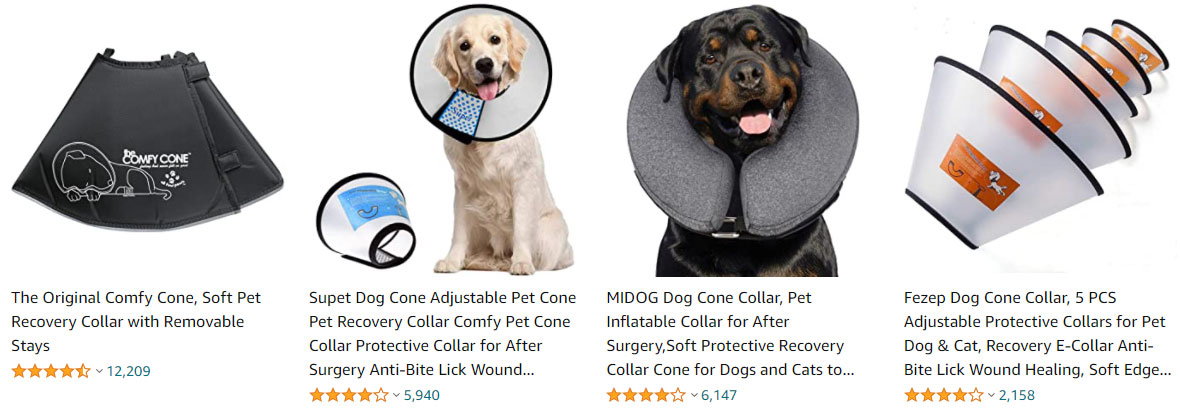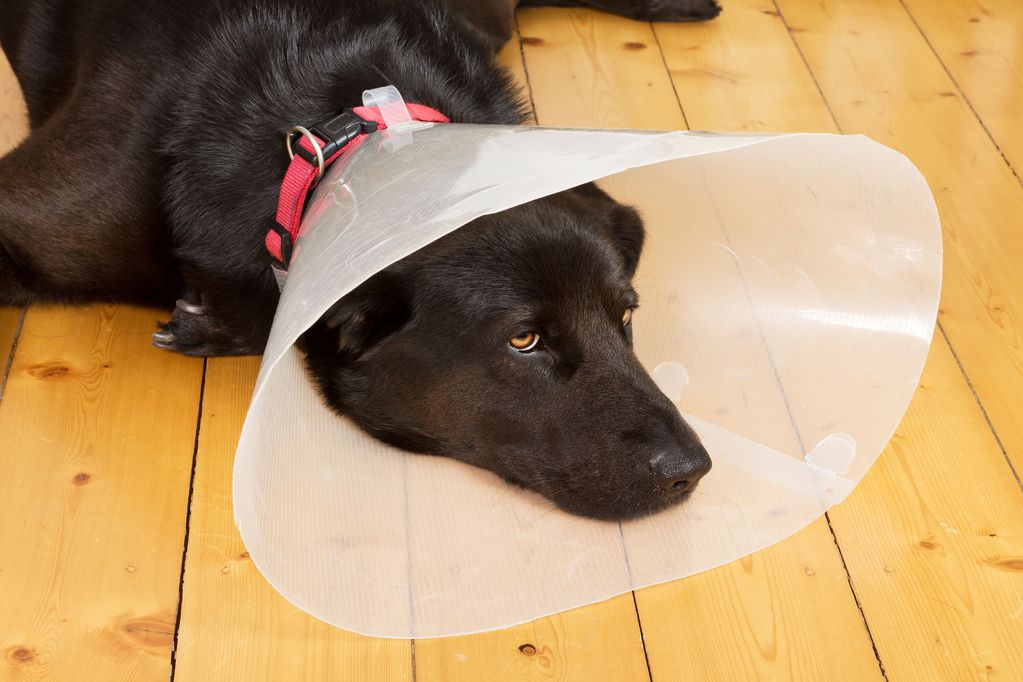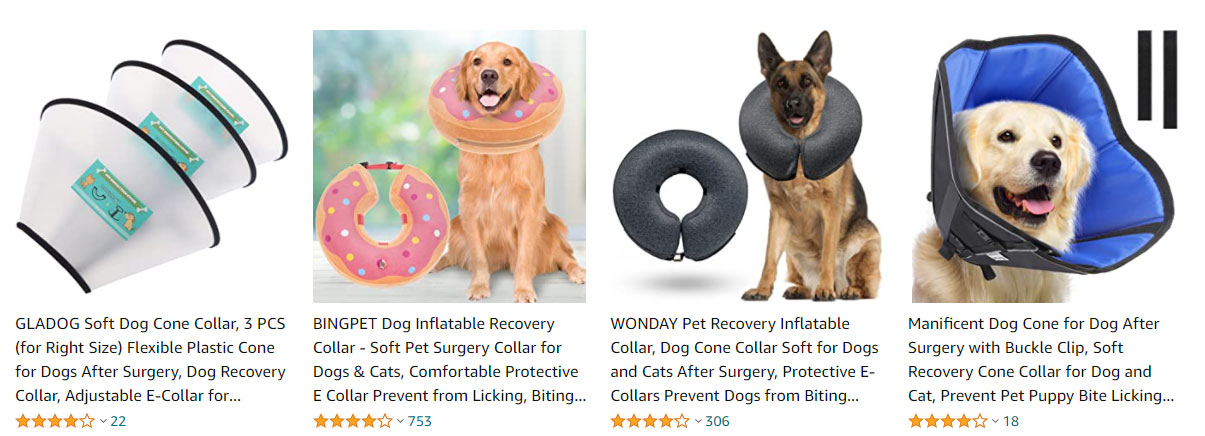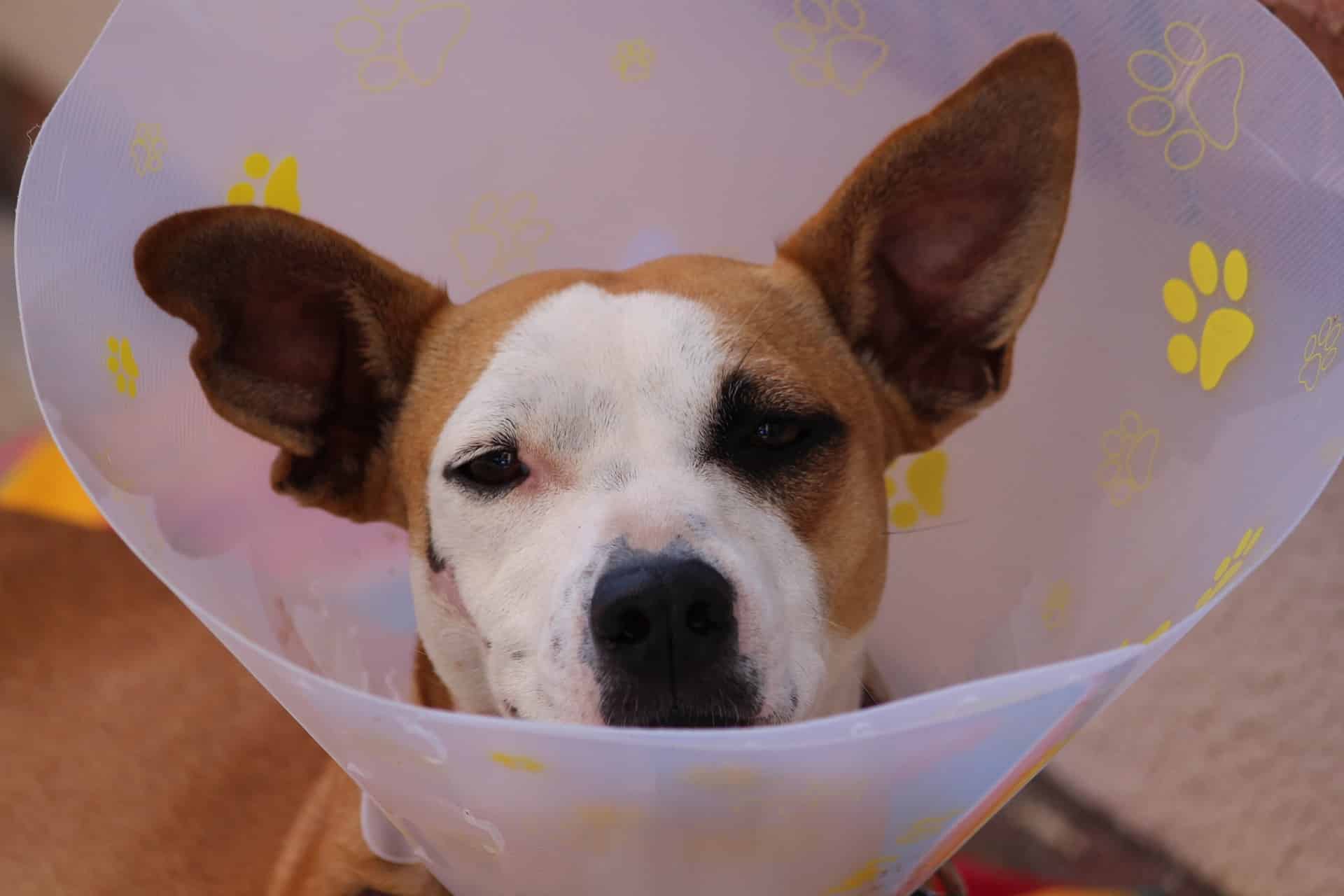Vet collar for dogs
The collar is a veterinary accessory used to prevent a dog from reaching an area of its body with its muzzle or, conversely, from scratching its head with its paws.
Behind this no-frills plastic cone is a highly effective object that generally does its job perfectly for a very affordable price. But why put a collar on a dog? Where to get one and how to choose it? Today, I propose you to discover all you need to know about this must have health of the veterinarians, a care accessory in its own right.
What is a dog collar?
The collar is a veterinary accessory that traditionally takes the shape of a rigid plastic cone and is attached to the dog's collar, giving the impression that the dog's head is stuck in a funnel. The term "funnel" is sometimes used to designate the collar, as well as the name "carcan" or, in Quebec, "Elizabethan collar", derived from the name "elisbethan collar" referring to the strawberries that were fashionable during the Elizabethan period.
Some collars adopt more advanced designs, and can be made of rigid textile or inflatable plastic. This type of configuration does not affect the performance of the object, but offers the animal increased comfort. They are sometimes preferred for long term treatments.
The collar completely surrounds the dog's head and is adapted to its size and morphology. Since they are not very elaborate, the collars can be "home-made" by owners who are a bit do-it-yourself. Rolled plastic sheet, cardboard or lampshade... The possibilities are almost endless. However, it is crucial to make sure that a homemade collar is perfectly safe before attaching it to your dog's collar.
The edges must not be sharp, neither towards the front nor towards the dog's neck. The collar must be very light, so as not to weigh down the animal's neck. Finally, the collar should be sufficiently flared and short so that the dog can drink at any time (it can be removed at mealtime), while being long enough to fulfill its role.

What is the purpose of a dog collar?
The collar is designed to restrict the dog's movements. It is a kind of restraint, hence its name, which prevents the animal from licking, scratching or biting certain areas of its own body. In fact, it is mostly used to promote the healing of wounds, to protect a dressing or stitches, or to prevent the animal from injuring itself by licking or scratching excessively, whether because of a real itch or a behavioral disorder.
Any wound, whether sutured, bandaged or left open, may require a collar to prevent the dog from licking it, an instinctive reflex that tends to delay healing. In some cases, a collar may be required for skin diseases that cause itching, redness, pimples and other lesions.
Dogs with behavioral problems that result in compulsive licking can also be fitted with this accessory to prevent them from self-harming. However, in this case, wearing a collar is not a permanent solution, but a temporary aid, restricting the dog's movements while waiting to find and eliminate the cause of the mental suffering that is leading him to injure himself.
If the collar is commonly used to prevent the dog from licking wounds on his body, it can also be used to prevent him from scratching his head. In particular, eye diseases (conjunctivitis) or ear diseases (ear scabies) can cause severe itching, leading the dog to scratch until it bleeds.
A dog can also be injured at the level of the head and need bandages and/or stitches, which it should not scratch with its claws. More rarely, the collar can be put in place just for the time of a veterinary consultation to prevent the dog from biting during the examination.
A muzzle is generally preferred for this purpose, but it is still sometimes used on moderately belligerent dogs, who have never worn a muzzle and may become unnecessarily stressed if it is imposed on them.
Caring for a dog with a ruff
While the collar has many advantages, it does have some disadvantages and can make life difficult for your dog. It's important to remember that a dog with a collar is vulnerable. He can't defend himself in case of an attack from other dogs, can't see much of his surroundings, including cars, may not be able to reach his water bowl... And may be distressed by that funny funnel around his head!
Make sure your dog can drink from his collar. If he can't, or doesn't even try, too disturbed by this constraint, you'll have to take him to his water bowl often and remove his collar while he quenches his thirst. The question of meals is less restrictive, since a dog generally only eats once or twice a day, during which time you can easily remove his collar if it bothers him.
Also take the time to reassure your pet, especially if he seems disturbed by the collar. All dogs do not have the same reaction when a collar is put on them, some hardly seem to notice it, while others freeze in terror, frightened by this halo that does not let them go... Finally, be especially vigilant during your walks and games. Ideally, keep your dog on a leash as soon as he puts a paw outside, to prevent him from wandering off and getting his collar stuck somewhere or being hit by a vehicle he didn't see coming.
Never let a dog with a collar go swimming to avoid any risk of drowning, and avoid walking him on a site presenting a risk of falling, since he can't see where he puts his paws. Also note that the collar being particularly cumbersome, your dog may drop your belongings on his way by brushing against your furniture.
So, don't hesitate to put your most precious things in a safe place, and to arrange your home so that your dog can move around without bumping into or getting stuck everywhere.

Choosing a collar for your dog
It is rare that the choice of a collar is necessary, because it is often provided by the veterinarian as soon as the treatment is finished. Nevertheless, it is possible to buy this type of accessory in pet stores (physical or online), at the veterinarian's, and even at some pharmacists.
It is then necessary to choose the perfect accessory according to the size of your dog, its neck size (although most collars are adjustable) and the length of its muzzle. Flat-nosed dogs (Carlins, Bulldogs, etc.) often only need a small collar, as their morphology already offers them little latitude in their movements. Long-nosed dogs, such as Greyhounds, will need a much larger device.
Once the device is in place, make sure it does its job and does not prevent your dog from drinking. If these two features are impossible to combine, which can happen with some dogs, you will need to take your dog to his water bowl regularly and remove his collar to quench his thirst.
The material and design of the collar doesn't really matter, as long as the accessory is completely safe. The choice of an inflatable or rigid fabric collar instead of the traditional plastic funnel is more a matter of budget and the amount of time the device is worn.
If your dog suffers from serious injuries and has to wear stitches or dressings for a long time, buying a more comfortable device can greatly improve his well-being, facilitate his rest and, in fact, promote his healing. Note that, although it is easy to buy a collar on your own, it is not recommended to have your dog wear one without the advice of a veterinarian, especially on a long-term basis.
Whatever the problem your pet is experiencing, it is highly recommended that you consult a veterinarian so that your pet can receive the appropriate care. The veterinarian will then determine if a collar is appropriate, and you will have the choice of purchasing one yourself or keeping the one that will probably be provided to you after you have treated your dog.
Please note that not all injuries require a collar. In the wild, dogs lick their wounds to reduce the risk of infection. This allows them to both clean their wounds and delay healing, which reduces the risk of an abscess developing.
In fact, a dog can take care of his little hurts by himself. The collar will only be necessary if the dog aggravates his case by licking too much, in which case you will absolutely have to take care of the wound by cleaning and disinfecting it regularly. In case of big wounds, however, licking is not enough. A veterinary visit is then necessary to treat the animal and determine if a collar is necessary.
FAQ
Can my dog eat with his collar on?
Every dog is different, and not all animals react in the same way when you put a collar on them. For some dogs, this constraint is a source of stress and dissuades them from trying to eat, for others, it is simply physically impossible, as the object prevents them from reaching their kibble. Also, it's up to you to see how your dog behaves in front of his bowl: if he manages to eat without any problem, you can leave it with him during meals, if he struggles to eat or doesn't manage at all, you'll have to take it away for dinner.
Can my dog drink from his collar?
A dog should always have access to plenty of clean water. So the first thing to do is to make sure your dog can drink with his collar on. Some animals do very well with their collar, and others do not, because of stress or their morphology. In this case, you should take them to their water bowl several times a day and remove their collar so they can quench their thirst.
Can my dog go out with his collar on?
Yes, and it is highly recommended that you continue to walk your dog while he is wearing a collar in order to keep him in good physical and psychological health. Nevertheless, be sure to keep him on a leash, and remain particularly vigilant: your dog can't see where he's putting his paws, can't see cars coming, can't defend himself against other dogs, can get his head stuck in a tight spot...
When to put a collar on your dog?
Ideally, it is up to the veterinarian to decide if wearing a collar is appropriate for your dog. Don't overuse the collar for the slightest problem, and avoid wearing it for long periods of time without the approval of your veterinarian.
The collar is an important care accessory, and its wearing generally contributes to the healing of the animal as well as the other veterinary treatments it may receive. Its importance in the healing process of a wound should not be overlooked, and it is essential not to give in to your dog's big, wet eyes, which are often uncomfortable when wearing this cumbersome accessory, and not to remove it before the wounds have completely healed.
In addition, it is important to keep in mind that this seemingly harmless accessory is a source of discomfort for the dog and makes him particularly vulnerable: a dog wearing a shackle must therefore be kept under constant surveillance.


